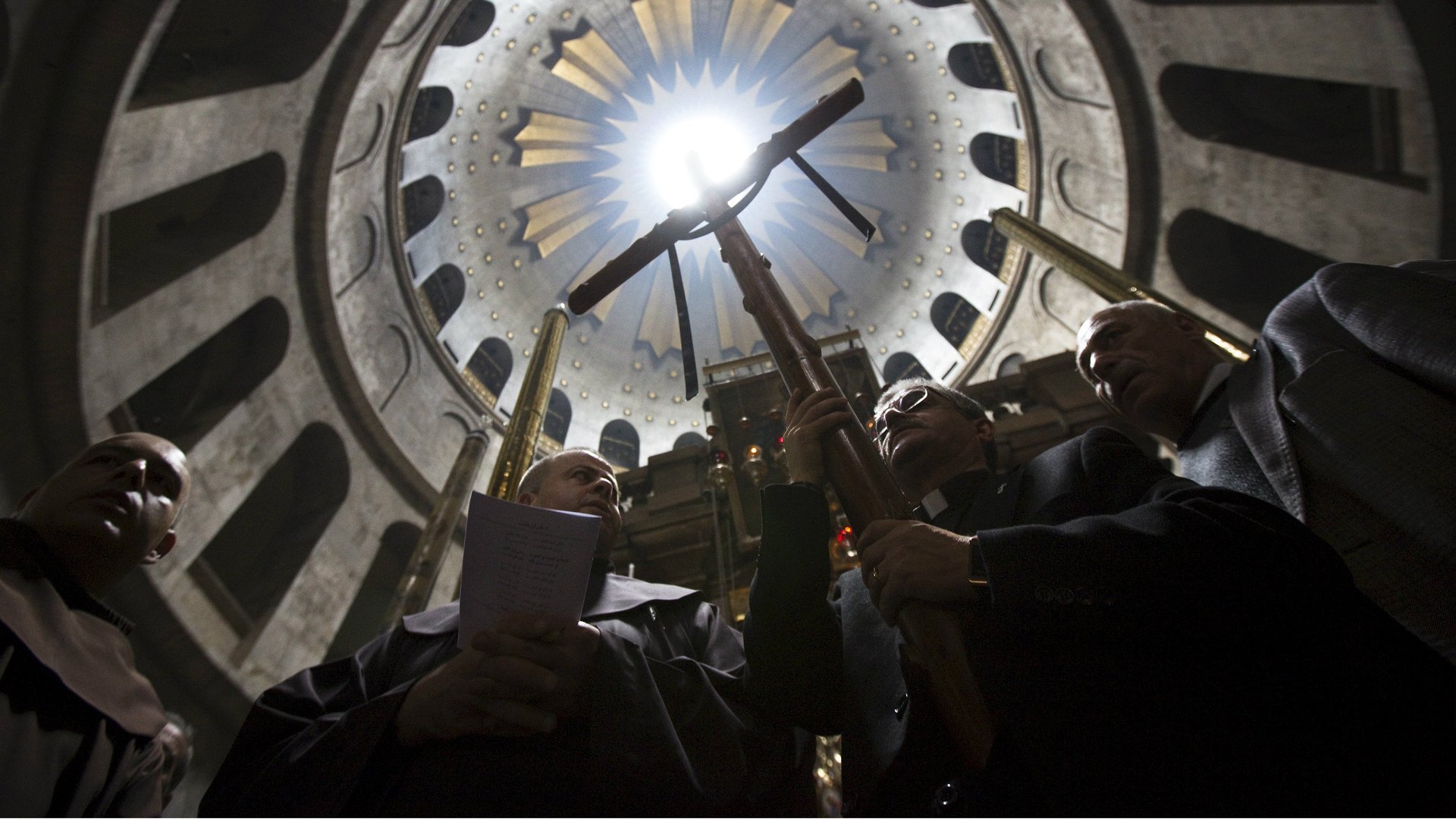A short history of the imminent collapse of Jesus Christ’s tomb in Jerusalem
The Church of the Holy Sepulcher is where most Christians believe Jesus Christ was placed after he was crucified. According to the Gospel of St. Matthew:


The Church of the Holy Sepulcher is where most Christians believe Jesus Christ was placed after he was crucified. According to the Gospel of St. Matthew:
When it was evening, there came a rich man from Arimathea named Joseph, who was himself a disciple of Jesus. He went to Pilate and asked for the body of Jesus; then Pilate ordered it to be handed over. Taking the body, Joseph wrapped it (in) clean linen and laid it in his new tomb that he had hewn in the rock. Then he rolled a huge stone across the entrance to the tomb and departed.
Three Christian communities—the Greek Orthodox, Armenian Apostolic, and Roman Catholic—currently share control the church, which is in Jerusalem, under the terms of the “status quo.” The terms dictate who can pray where and at what time. Non-Armenian priests in vestments may pass along an Armenian-controlled walkway but they cannot not stand. The Catholics won’t move a ladder. In 2008, an embarrassing fight between monks was recorded and widely watched on YouTube.
This infighting has affected the renovations the holy site desperately needs—paying or leading repairs of a structure implies ownership of said structure.
But the threat of the church collapsing has finally brought these rival factions together. The leaders of the three Christian communities have agreed to equally pay for a $3.4 million renovation, which is set to begin next month, according to The New York Times (paywall).
The latest renovation is one of many repairs the Church of the Holy Sepulcher has undergone over several centuries.
The structure was burnt and looted in 614, damaged by an earthquake in 808, and then destroyed in 1009 by Fatamid Caliph al-Hakim’s order. The site was eventually reconstructed by the Byzantine Empire in 1048.
The church was further renovated during the 12th-century by Crusaders and Franciscan friars. During this period, the Aedicule—the shrine—was rebuilt. (Some bits of the structure remain today). The church was hit by another devastating fire in 1808, which greatly damaged the church’s Aedicule.
An earthquake of 1927 seriously weakened the structures of the church. The British authorizes, growing increasingly worried about the stability of the holy site, decided to intervene directly in 1947. They reinforced the structures of the church with an iron cage and wooden supports.
To better address the damage from the 1927 earthquake, representatives from the three religious communities agreed on a restoration project to prevent the church from collapsing during the 1950s. Archeological research was allowed to take place during this brief time of unity. But it didn’t last.
Finally, in February 2015, the Israeli police barricaded the church and threw out the monks that protect it after reports it was on the verge of collapse. That seems to help create some goodwill between the three branches, leading to this moment.
These new repairs will remove the iron support put in by the British Mandate, address the weaknesses around the remains 12th-century Crusader shrine, and even repair cracks in the tomb itself.
This may finally bring some unity to the various strands of Christianity. Well, except Protestants, who have no presence at the church and prefer the rival Garden Tomb, on the edge of the Old City.